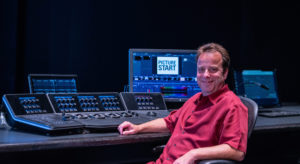 Blackmagic Design announced today that EFILM Senior Colorist Skip Kimball used DaVinci Resolve Studio to grade Twentieth Century Fox’s Ford vs Ferrari.
Blackmagic Design announced today that EFILM Senior Colorist Skip Kimball used DaVinci Resolve Studio to grade Twentieth Century Fox’s Ford vs Ferrari.
Directed by James Mangold, the film follows the true story of car designer Carroll Shelby (Matt Damon) and test driver Ken Miles (Christian Bale) as they work to build a revolutionary sports car for Ford Motor Company in their bid to outperform Ferrari at the 1966 24 Hours of Le Mans.

Cinematographer Phedon Papamichael looked to earlier inspiration for the look of the film, in particular the 1966 Grand Prix starring James Garner. Despite the film’s setting in the mid 1960’s, Kimball and Papamichael, who had worked together on three previous projects, were resistant to creating a “vintage” look out of the box. Instead, they developed a unique LUT early in the process.

DaVinci Resolve played a critical role not only in grading the film but also enabling fast reviews and continuous visual effects updates. Conformed in Resolve, Ford vs Ferrari relied on EFILM conform editor Tashi Trieu to keep up with the cut and provide director James Mangold the ability to audition looks and versions easily.
For more information please visit www.blackmagicdesign.com




